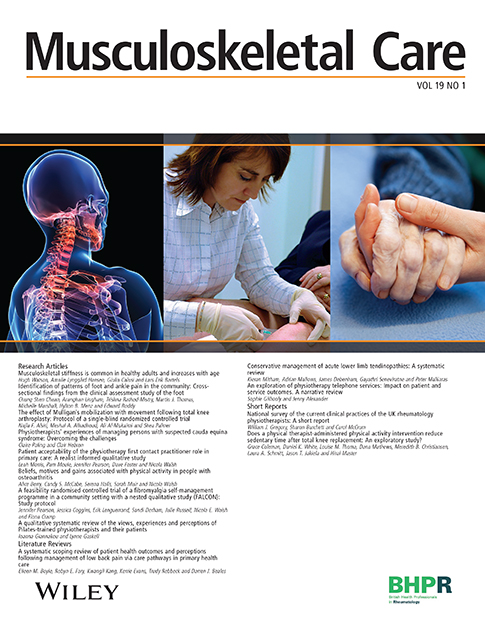Musculoskeletal stiffness is common in healthy adults and increases with age
Abstract
Introduction/Objective
Musculoskeletal stiffness is a common feature in rheumatologic inflammatory diseases but little is known about background joint stiffness in the healthy population. The aim of this survey was to determine the variation in musculoskeletal stiffness with age in a cohort of healthy adults using a patient reported outcome instrument designed to assess stiffness in rheumatoid arthritis.
Methods
Healthy subjects ≥18 years old were enrolled at two sites. Those with a diagnosis of rheumatological disease were excluded. Each subject completed a 21-item questionnaire designed to evaluate the severity of musculoskeletal stiffness, its physical impact and psychosocial impact, and to provide an overall stiffness score, expressed as a percentage. Scores were analyzed by age group.
Results
Two hundred eighty-two subjects were included with a mean age of 42 years (±17, range 18–85). More than 50% of subjects reported stiffness in each age group but with a low median overall stiffness score of 5.4% (IQR 0, 12.6). Scores were markedly higher in those aged ≥60 years, median 10.0% (IQR 2.6, 21.9), and only in this age group did the majority of subjects report a physical or psychosocial impact of stiffness. Scores in males and females were similar.
Conclusion
The prevalence of musculoskeletal stiffness in healthy subjects of all ages is not negligible, and the high frequency of stiffness and greater severity in the upper age cohort suggest that the background joint stiffness amongst older subjects should be considered when interpreting stiffness in rheumatologic patients.
CONFLICT OF INTEREST
The authors have no conflicts of interest to report.




